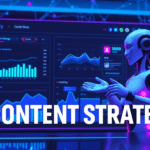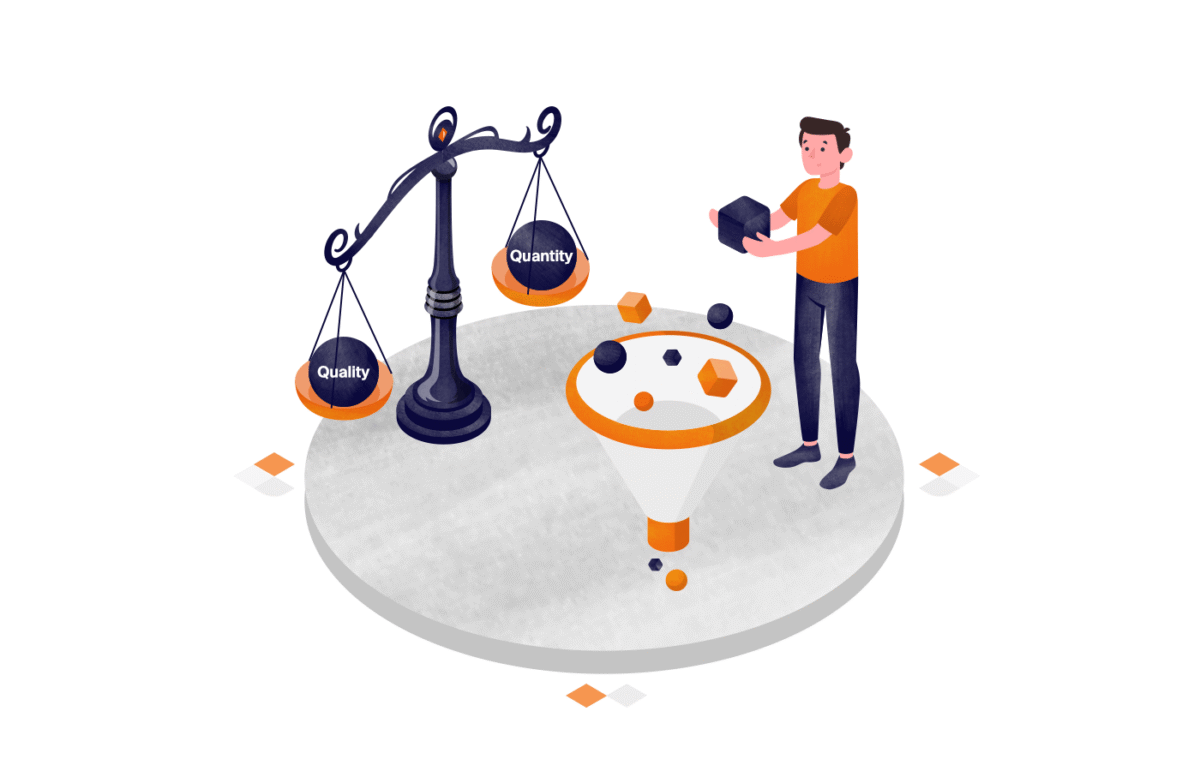
The Sage’s Playbook: Mastering AI Content Strategy in Singapore’s Multilingual Market
August 4, 2025
AI Content Generation is Solving Asia’s Language Diversity Challenges
August 5, 2025The Problem with Playing It Safe
It’s the oldest trick in the book—and that’s exactly the problem. Too many companies still rely on outdated, cookie-cutter lead generation methods, hoping they’ll magically cut through the noise in a market as sharp and competitive as Singapore’s. Cold lists, mass email blasts, and generic content syndication might’ve worked a decade ago. Today? They’re noise at best—and expensive failures at worst.
The brutal truth? Playing it safe in B2B lead generation is costing Singaporean businesses more than they realize. Generic tactics attract generic leads—unqualified prospects who waste your sales team’s time and drain your marketing budget. In a high-stakes environment like Singapore, where business decisions are precise, informed, and ROI-driven, there’s simply no room for “spray and pray.”
Instead, companies need to shift from mass outreach to strategic attraction. The market has evolved. Buyers are smarter, expectations are higher, and attention is a scarce currency. If your lead generation tactics don’t reflect this shift, you’re not just falling behind—you’re invisible.
It’s time to stop chasing volume and start building pipelines that deliver high-value conversations. Because in Singapore, being generic is the fastest way to be forgotten.

Why the Singapore B2B Landscape Demands Precision, Not Templates
Singapore isn’t just another market—it’s a high-functioning hub of innovation, decision-making speed, and regional influence. The city-state’s B2B space operates on efficiency, cultural complexity, and strategic depth. Yet too many businesses still try to crack it using the same worn-out playbooks meant for Western audiences or broader Asia-Pacific campaigns.
This doesn’t work.
Singaporean decision-makers expect hyper-relevance. They won’t waste time on vague value propositions or unclear solutions. If your messaging doesn’t speak directly to their pain points with clarity and credibility, your lead dies before it even breathes.
This is where precision trumps templates. Success hinges on having industry-specific messaging, channel-appropriate delivery, and market-sensitive timing. From fintech to manufacturing to logistics, every B2B sector in Singapore demands a unique approach.
The good news? When you do it right—when your strategy is sharp, segmented, and culturally attuned—the results are immediate and measurable. That’s what makes B2B Lead Generation for Singapore such a powerful differentiator when executed strategically: it’s not just about filling your CRM—it’s about filling it with prospects that close.

The Myth of “More Leads is Better”: Why Quality > Quantity
Here’s a hard truth many B2B marketers in Singapore still ignore: more leads doesn’t mean more wins. In fact, chasing quantity is often a trap—a deceptive vanity metric that disguises pipeline inefficiencies and masks deeper strategic failures.
Why? Because not all leads are created equal.
When you blast out generic campaigns to a broad audience, you may hit high numbers—but how many of those leads actually convert into sales? If your sales team is wasting hours chasing unqualified prospects, the damage isn’t just time lost—it’s revenue delayed, morale crushed, and resources misused.
In contrast, a refined B2B lead generation strategy focuses on high-intent prospects. These are leads that match your ideal customer profile, show behavioral engagement, and are nurtured through personalized journeys. It’s about alignment—not assumption.
In Singapore, where B2B buyers move fast and demand evidence-backed solutions, this distinction is everything. A single quality lead can be worth more than 50 irrelevant contacts. And when your funnel is built to prioritize fit, readiness, and intent, conversion rates jump—while acquisition costs drop.
The smartest teams know this: success in B2B Lead Generation for Singapore isn’t about how wide you cast the net—it’s about how sharp the spear is when you throw it.
Targeting That Hits Different: Data-Driven Segmentation for Better Results
Here’s where the real shift happens—from hopeful marketing to calculated precision. If your B2B lead generation strategy doesn’t begin with ruthless segmentation, you’re not generating leads—you’re generating noise.
In Singapore’s densely competitive B2B environment, segmentation isn’t optional. It’s survival. Effective targeting means more than just job titles and industries. It’s about drilling into behavioral data, buyer intent signals, firmographics, technographics, and engagement history. This is where true personalization begins—not in copywriting, but in targeting.
With smart data segmentation, you move from generic outreach to hyper-relevant conversations. And in a market where business leaders expect efficiency and specificity, that relevance is your golden ticket. You’re not just showing up—you’re showing up with a purpose.
Modern tools like predictive analytics, lead scoring algorithms, and real-time engagement tracking are non-negotiable. They allow you to prioritize high-fit accounts and speak directly to their pain points—without guesswork.
That’s the advantage of B2B Lead Generation for Singapore when powered by data: every lead feels like a warm introduction, not a cold interruption.

Local Context is King: Cultural Nuance in Singapore’s B2B Deal-Making
Singapore may be globally connected, but it runs on a uniquely local current. Relationships here are built on credibility, context, and consistency. And if your lead generation doesn’t reflect that, you’ll struggle to break through.
Many foreign-based B2B campaigns overlook one critical truth—Singapore isn’t just a geographical market, it’s a cultural one. Success here depends on more than strategy. It requires cultural fluency.
That means understanding how business decisions are made: the preference for credibility over hype, the value placed on educational content, the role of hierarchy in corporate structures. It means crafting messages that resonate with Singaporean sensibilities—concise, competent, and respectful of time.
What works in Silicon Valley might fall flat in Shenton Way.
This is why culturally nuanced content and outreach are central to effective B2B Lead Generation for Singapore. When your campaign reflects an insider’s understanding—not an outsider’s guess—you earn trust faster, land meetings quicker, and build traction where others stall.
Bottom line: Cultural alignment isn’t soft—it’s strategic. And it’s the difference between being heard and being ignored.
Beyond Cold Emails: The Power of Strategic Multi-Channel Outreach
Let’s face it—cold emails alone are dead. Or at least, they’re on life support. In Singapore’s fast-moving B2B scene, a single-channel approach just doesn’t cut it anymore. Decision-makers are bombarded with noise across every platform. If you’re not meeting them where they are—on their terms—you’re invisible.
Strategic outreach today is multi-channel by design and personalized by intent. It weaves together email, LinkedIn, direct messaging, content remarketing, webinars, even well-timed calls. And each touchpoint isn’t a standalone blast—it’s part of a sequence engineered to build trust, deliver value, and guide the lead toward conversion.
This isn’t about automation—it’s about orchestration.
When done right, multi-channel lead gen feels seamless, not spammy. Your messaging is consistent but tailored. Your cadence is strategic, not intrusive. And your results? Significantly stronger.
Singaporean professionals are digital-savvy. They know when they’re being mass-targeted—and they ignore it. But when outreach is timely, personal, and positioned as value—not a pitch—they engage. They reply. They convert.
This is what elevated B2B Lead Generation for Singapore looks like: connected, coordinated, and customer-first.

How to Align Sales and Marketing to Close More Leads, Faster
Here’s the silent killer of B2B lead generation performance in Singapore: misalignment between sales and marketing.
Marketing teams complain that sales don’t follow up on leads. Sales complain that marketing hands them junk. Sound familiar? It’s not just a communication issue—it’s a strategic breakdown that bleeds revenue.
In high-stakes B2B environments like Singapore, time is leverage. If your marketing team isn’t qualifying leads with clear criteria and your sales team isn’t nurturing with context, you’re leaving money on the table. Fast.
Alignment means shared definitions, unified KPIs, and real-time feedback loops. It means having clear Service Level Agreements (SLAs) that define when a lead is sales-ready, how fast follow-up happens, and what handover should look like. It’s also about closing the loop—ensuring marketing learns from won/lost deals to continually refine targeting.
When sales and marketing are locked in step, the customer experience improves. And that leads to more conversions, higher deal velocity, and greater ROI.
In short, B2B Lead Generation for Singapore isn’t just about generating demand—it’s about converting it. And that only happens when your revenue teams are speaking the same language.
Why Your Lead Funnel Needs Real-Time Optimization—Not Gut Feelings
Gone are the days of set-it-and-forget-it lead funnels. In Singapore’s fast-paced B2B ecosystem, agility is everything. If you’re not optimizing in real time, you’re falling behind in real time.
Real-time optimization means monitoring every stage of your funnel—not just lead quantity, but engagement, drop-off points, conversion rates, and sales cycle duration. It means using tools like heatmaps, CRM analytics, email performance data, and attribution models to guide decisions—not assumptions.
Too many businesses rely on instinct over insight. They double down on campaigns that “feel” right but don’t perform. Or worse, they ignore weak spots until it’s too late.
In contrast, smart operators test, tweak, and re-target constantly. They A/B test subject lines, recalibrate messaging based on open rates, shift budgets mid-campaign based on performance signals. They’re nimble because the market demands it.
Especially in a market like Singapore, where buyer behavior evolves quickly and competition is unforgiving, this level of adaptability isn’t a luxury—it’s mandatory.
The goal of B2B Lead Generation for Singapore is clear: get smarter with every click, call, and conversion. Because when your funnel learns in real time, it closes in real time.

Case in Point: What a Smart B2B Lead Generation Strategy Looks Like
Let’s bring this to life.
Imagine a mid-sized SaaS company targeting logistics firms in Singapore. Instead of running a blanket campaign, they use firmographic data to isolate companies with 200–500 employees and recent funding rounds. They then layer in technographics to find firms using legacy systems—ripe for disruption.
The outreach strategy? A three-pronged campaign:
- Email Series – Personalized sequences addressing sector-specific pain points.
- LinkedIn Engagement – Connection requests from subject matter experts followed by value-first messages and content shares.
- Remarketing Campaigns – Ads targeting engaged leads with case studies and ROI calculators.
Results after 90 days?
- 220 MQLs with 78% fit score.
- 40 sales-qualified leads passed to reps.
- $400K+ in pipeline value attributed directly to the campaign.
That’s not luck—it’s orchestration. It’s precision-led B2B Lead Generation for Singapore in action, and it’s replicable for any serious business ready to leave guesswork behind.
This is what it looks like when you trade templates for tactics. And in this market, that’s how winners are made.
Conclusion – It’s Time to Outgrow Generic and Get Strategic
There’s a shift happening in the B2B landscape—and Singapore is at the front of it. Generic tactics, once tolerated, are now obsolete. The market has matured. Decision-makers demand relevance, speed, and authenticity. If your strategy isn’t meeting that standard, your competitors will.
This isn’t about trends. It’s about results. Effective B2B lead generation in Singapore isn’t about casting a wider net—it’s about deploying a sharper spear. It’s about ditching the volume game for the precision play. Every message you send, every channel you activate, every lead you nurture needs to be intentional, contextual, and conversion-focused.
No more guessing. No more spray-and-pray. No more wasting budget on leads that will never close.
Whether you’re a startup, a growth-stage company, or an established enterprise, it’s time to demand more from your pipeline—and your strategy. The future belongs to those who understand the market, speak its language, and move with intelligence.
If you’re ready to stop settling for “good enough” and start building a lead generation machine that actually delivers, it’s time to invest in smarter, sharper execution.
Because when it comes to B2B Lead Generation for Singapore, average doesn’t survive—only strategic wins.


